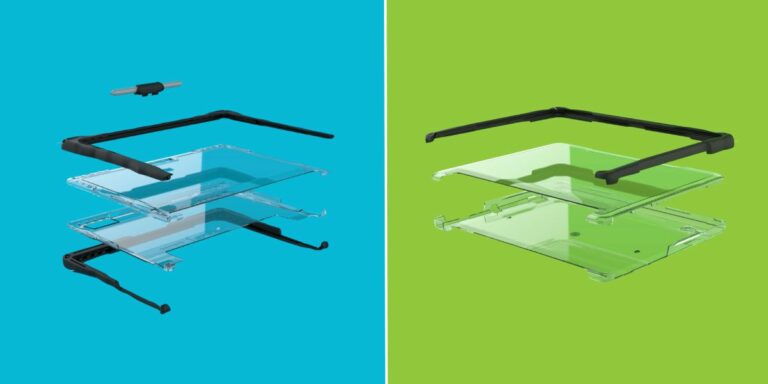
When schools, students, and families suddenly shifted to at-home learning due to the COVID-19 pandemic, one thing became glaringly obvious – educational technology is now entirely essential to modern schooling. Traditionally, when school budgets get pinched, technology is on the chopping block. As 2020 proved, access to tech keeps students connected, and educational disparities continue to widen when students lack access.
As the U.S. government pumps COVID-19 funding into various sectors, some of that money is dedicated to purchasing technology that will both aid in distance education and keep students safe back in the classroom. Let’s explore how the Coronavirus Aid, Relief, and Economic Security (CARES) Act – and the subsequent relief packages – will provide funding schools need to get great tech and accessories into the hands of students and teachers.
Who gets the money, and what is it for?
Funds from CARES, the Coronavirus Response and Relief Supplemental Appropriations (CRRSA) Act, and the American Rescue Plan (ARP) are distributed proportionally to each state, based on the percentage of Title I funds they receive. The money is then distributed by state education agencies (SEAs), 90% of which must go to local educational agencies. The remaining 10% can be used for targeted purposes.
All of the approved uses for Elementary and Secondary School Emergency Relief Fund (ESSER) funds are related in some way to COVID-19, from cleaning and sanitizing to programs that bridge learning gaps. Importantly, one of the approved uses is for the purchase of educational technology, including hardware, software, and connectivity. In Howard County, Maryland, the Baltimore Sun reports, “$2.25 million will go toward achieving the school system’s goal of having a device for all of its approximately 57,000 students by the end of the academic year.” [link]
Breaking down the CARES Act… and beyond

On March 27, 2020, the CARES Act was signed into law, providing a $2 trillion package of assistance measures, including $30.75 billion for an Education Stabilization Fund. This fund is divided into four categories:
- Education Stabilization Fund (ESF) Discretionary Grants
- Governor’s Emergency Education Relief Fund (GEER)
- Elementary and Secondary School Emergency Relief Fund (ESSER)
- Higher Education Emergency Relief Fund
Because the CARES Act was passed to help mitigate the effects and expenses of the pandemic, the law stipulates that funds can cover purchases made on or after March 13, 2020 – the day the national emergency was declared.
All CARES money must be spent by September of 2022, but funding doesn’t stop with the CARES Act. In late December, the CRRSA Act was passed. This adds an additional $81.9 billion in funds to the ESF. Finally, the ARP, passed in March 2021. This bill provides an additional $122 billion in relief specifically for K–12 schools. This additional funding can be used through September 2023.
Taken from the larger ESF, the ESSER fund is the pool of money allocated specifically for K–12 schools. Of the CARES Act’s $30.75 billion, $13.5 billion were allocated to the ESSER fund, which then provides funding to local educational agencies (LEAs), including charter schools that are LEAs. CRRSA contributed $54.3 billion, and ARP added nearly $122 billion.
Funding for the present and protection for the future
As funding makes its way to school districts, they will need to assess how to best use these emergency funds. Clearly, investment in tech and connectivity for every student is a must, but there are many factors to consider. Those charged with making ed tech decisions know all too well that technology is not a one-time expense.
While laptops, Chromebooks, and tablets might be technologically able to survive a few school years, surviving students is another matter altogether. When choosing the tech that’s right for each school and district, it’s important to decide which level of protection will help keep devices in service the longest. Beyond the actual cost of repair, global part shortages for both microchips and screens could make quick repairs difficult. Between cost and spare part scarcity, there are more reasons than ever to invest in solid protection.
Gumdrop’s cases are designed for students of all ages. From easy-to-grip, kid-friendly FoamTech to sleek, budget-friendly SlimTech, schools can find protection solutions that fit their needs. Gumdrop cases are rigorously drop-tested, so they can stand up to a tough day at school. Plus, Gumdrop has experience fulfilling large orders, with cases on hand for rapid deployment, so districts can protect their devices right away. Finally, Gumdrop is TechShell Authorized, which means the cases integrate impressive TechShell features and functionality, resulting in the best-fitting, highest-quality molded cases in the K–12 market, protecting devices from Dell, Lenovo, Apple, Acer, HP, Asus, Samsung, Google, and Microsoft.
“I have seen a student throw an iPad across the room in frustration and with the Gumdrop case on, it was perfectly fine and working.” – Leann Wondra, Assistant of Technology, Hutchinson Public School
In the past, finding room in the budget for tech and the necessary accessories was always a challenge. But as the U.S. government makes substantial investments in getting kids back to school safely, school districts should be able to purchase the tech that helps students learn both at home and in the classroom.



